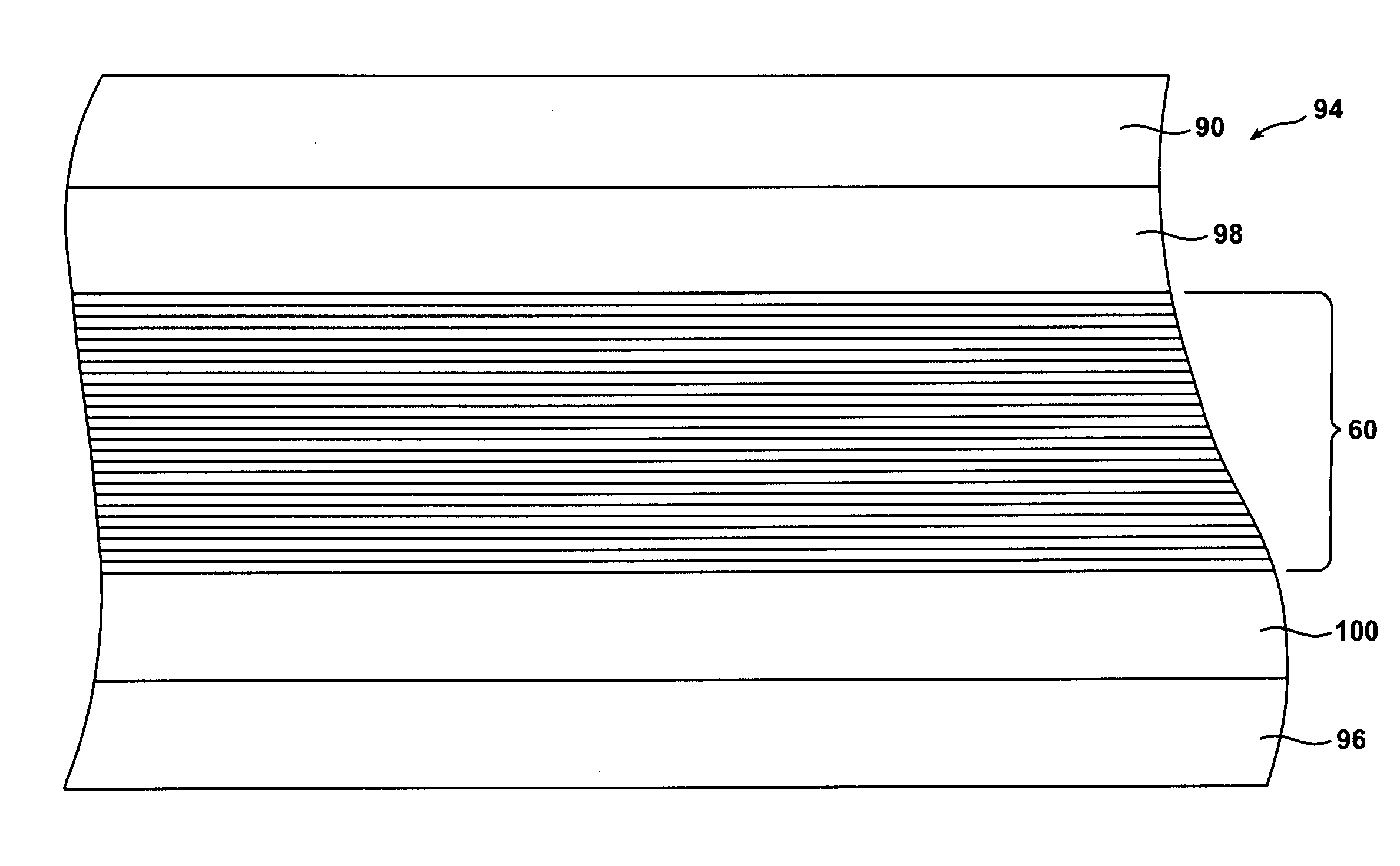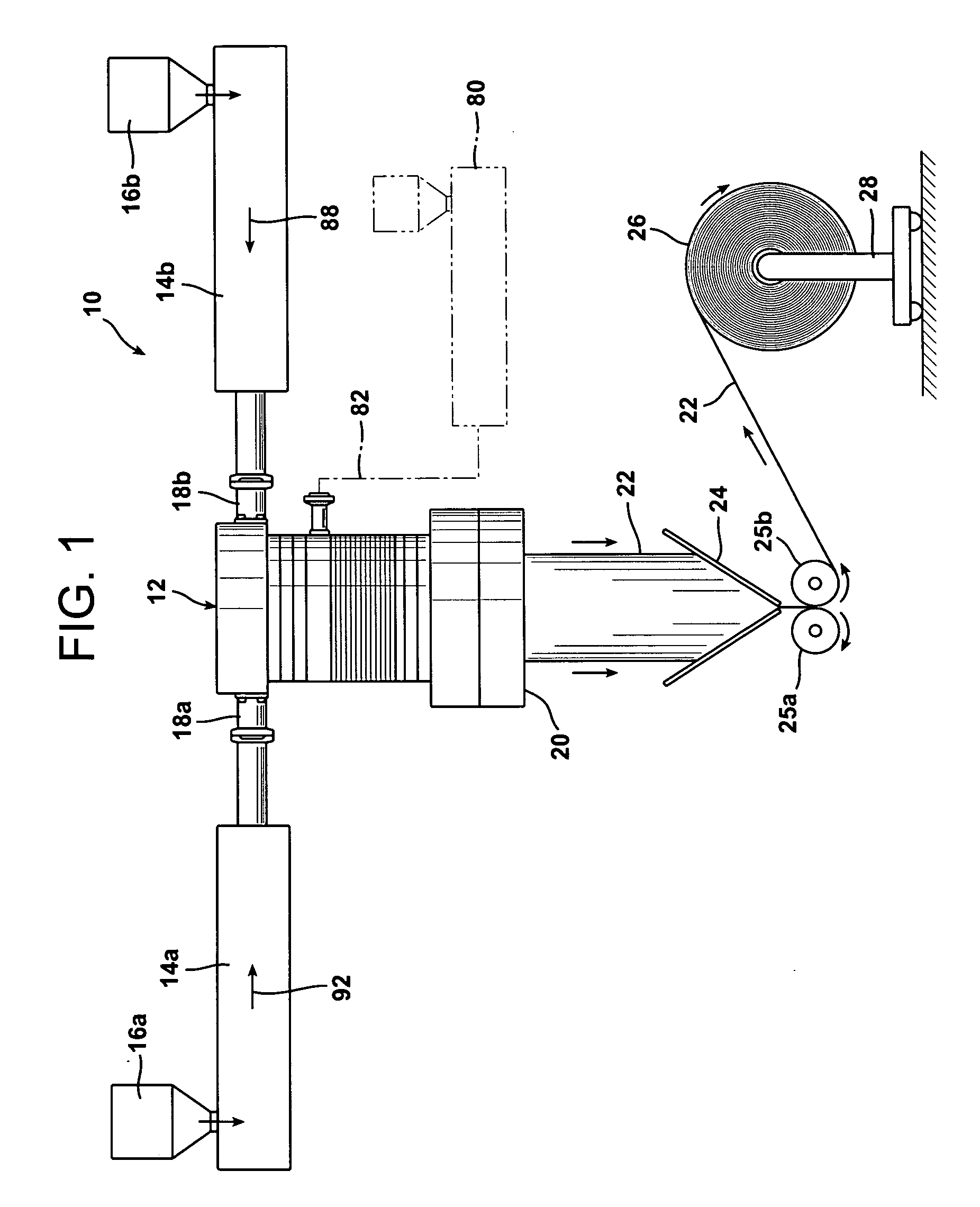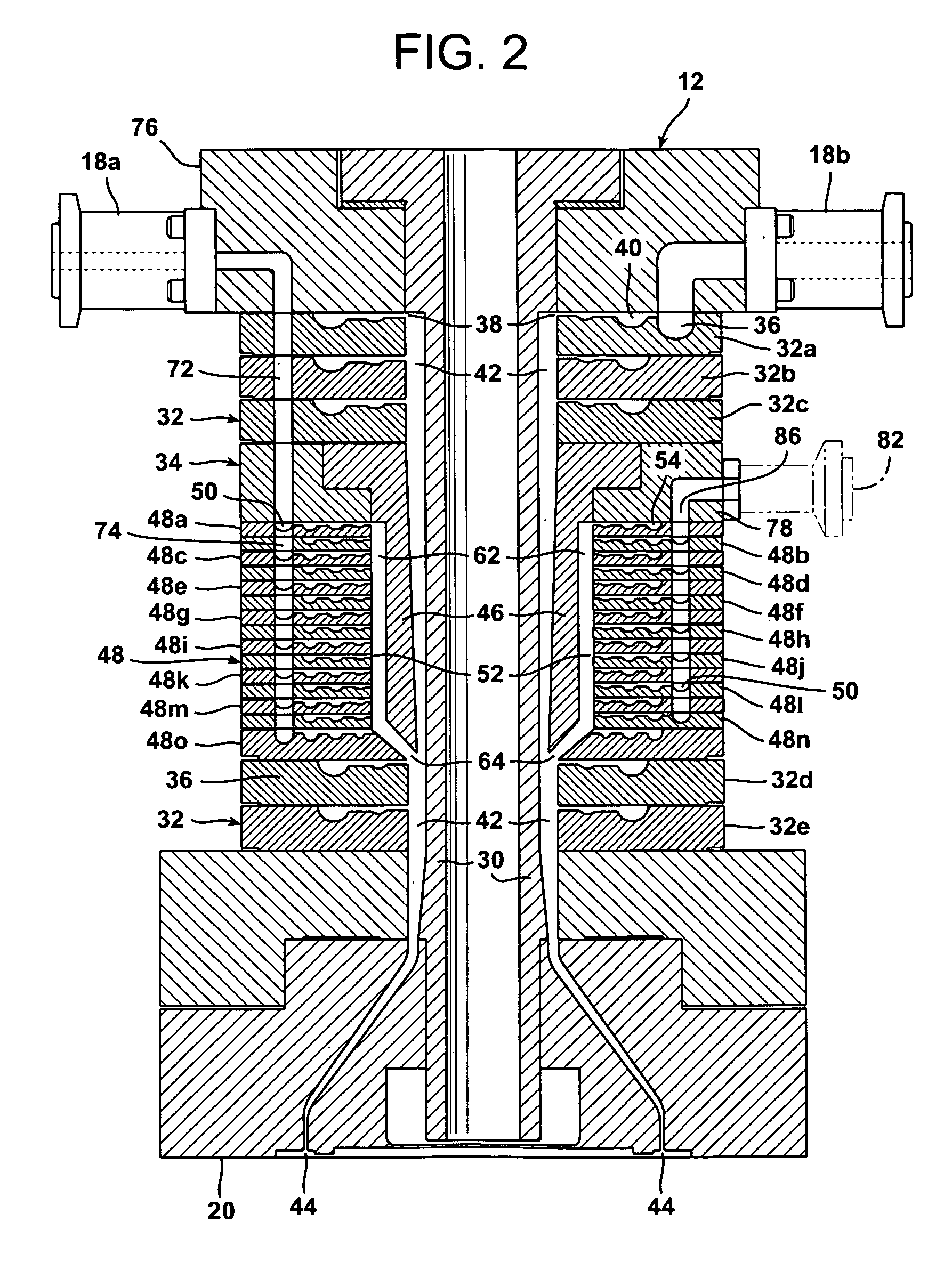Multilayer, Heat-Shrinkable Film Comprising a Plurality of Microlayers
a heat shrinkable film and multi-layer technology, applied in the field of packaging materials, to achieve the effect of reducing the thickness
- Summary
- Abstract
- Description
- Claims
- Application Information
AI Technical Summary
Benefits of technology
Problems solved by technology
Method used
Image
Examples
example 4
[0175]A multilayer film in accordance with the present invention was made and had the following twenty nine-layer structure, with a total film thickness of 0.30 mils:[0176]Layers 1, 2: 44% MDPE-1+40% EVA-1+16% MB1 (20% of total thickness of layers 1-29)[0177]Layers 3, 5, 7, 9, 11, 13, 15, 17, 19, 21, 23, 25, 27:[0178]LLDPE-1 (1.54% of total thickness of layers 1-29)[0179]Layers 4, 6, 8, 10, 12, 14, 16, 18, 20, 22, 24, 26:[0180]30% MDPE-1+70% LLDPE-1 (3.33% of total thickness of layers 1-29)[0181]Layer 28, 29: 44% MDPE-1+40% EVA-1+16% MB1 (20% of total thickness of layers 1-29)
[0182]The film was fully coextruded and stretch-oriented via a blown bubble process as in Example 1. However, the film was first coextruded as a tape using an annular 29-layer multilayer die, followed by a water quench upon exiting the die. The die was as described above and illustrated in FIG. 2, except that the microlayer assembly included a total of 25 microlayer distribution plates. Fluidized (molten) polym...
example 5
[0184]A multilayer film in accordance with the present invention was made by the process described above for Inventive Example 4, and had the following twenty nine-layer structure with total film thickness of 0.30 mils:[0185]Layer 1: 44.5% LLDPE-1+22.1% MDPE-1+13.4% EVA-1+20% MB2 (12.5% of total thickness of layers 1-29)[0186]Layer 2: 44.5% LLDPE-1+22.1% MDPE-1+13.4% EVA-1+20% MB3 (12.5% of total thickness of layers 1-29)[0187]Layers 3, 5, 7, 9, 11, 13, 15, 17, 19, 21, 23, 25, 27:[0188]LLDPE-1 (1.92% of total thickness of layers 1-29)[0189]Layers 4, 6, 8, 10, 12, 14, 16, 18, 20, 22, 24, 26:[0190]50% LLDPE-1+50% Repro-1 (2.09% of total thickness of layers 1-29)[0191]Layer 28: 44.5% LLDPE-1+22.1% MDPE-1+13.4% EVA-1+20% MB3 (12.5% of total thickness of layers 1-29)[0192]Layer 29: 44.5% LLDPE-1+22.1% MDPE-1+13.4% EVA-1+20% MB2 (12.5% of total thickness of layers 1-29)
example 6
[0193]A multilayer film in accordance with the present invention was made by the process described above for Inventive Example 4, and had the following twenty nine-layer structure with total film thickness of 0.30 mils:[0194]Layers 1, 2: 42% MDPE-1+38% EVA-1+20% MB4 (25.0% of total thickness of layers 1-29)[0195]Layers 3, 5, 7, 9, 11, 13, 15, 17, 19, 21, 23, 25, 27:[0196]VLDPE-3 (1.92% of total thickness of layers 1-29)[0197]Layers 4, 6, 8, 10, 12, 14, 16, 18, 20, 22, 24, 26:[0198]60% LLDPE-1+40% MDPE-1 (2.08% of total thickness of layers 1-29)[0199]Layer 28, 29: 42% MDPE-1+38% EVA-1+20% MB4 (25.0% of total thickness of layers 1-29)
PUM
| Property | Measurement | Unit |
|---|---|---|
| Length | aaaaa | aaaaa |
| Percent by mass | aaaaa | aaaaa |
| Percent by mass | aaaaa | aaaaa |
Abstract
Description
Claims
Application Information
 Login to View More
Login to View More - Generate Ideas
- Intellectual Property
- Life Sciences
- Materials
- Tech Scout
- Unparalleled Data Quality
- Higher Quality Content
- 60% Fewer Hallucinations
Browse by: Latest US Patents, China's latest patents, Technical Efficacy Thesaurus, Application Domain, Technology Topic, Popular Technical Reports.
© 2025 PatSnap. All rights reserved.Legal|Privacy policy|Modern Slavery Act Transparency Statement|Sitemap|About US| Contact US: help@patsnap.com



